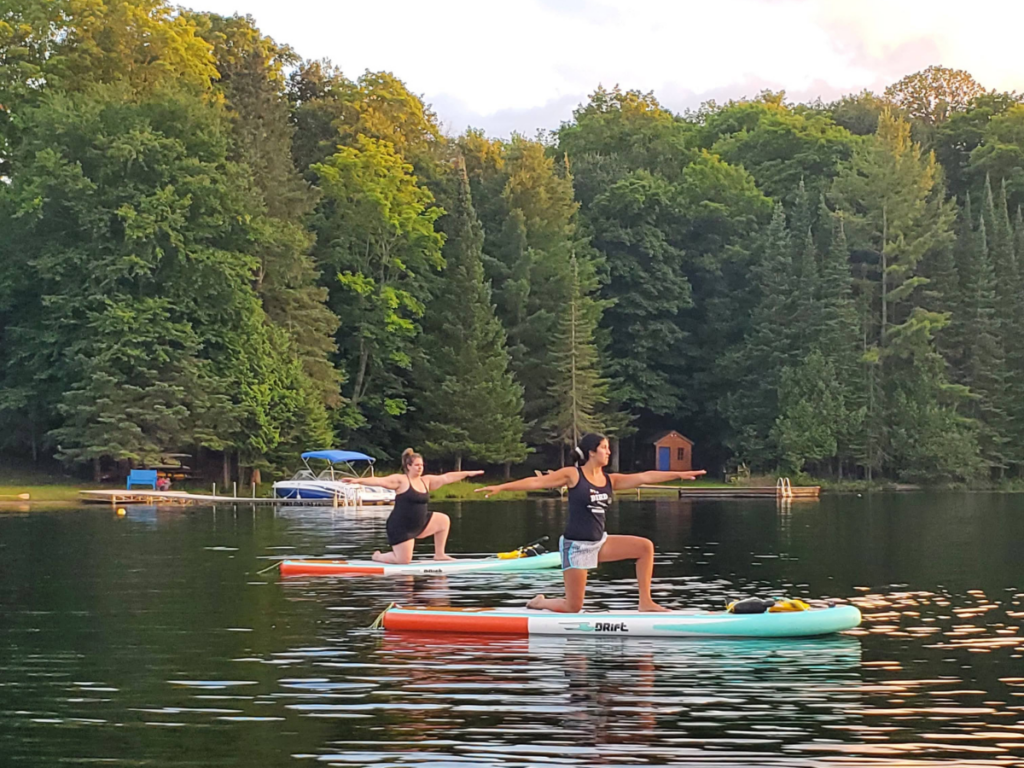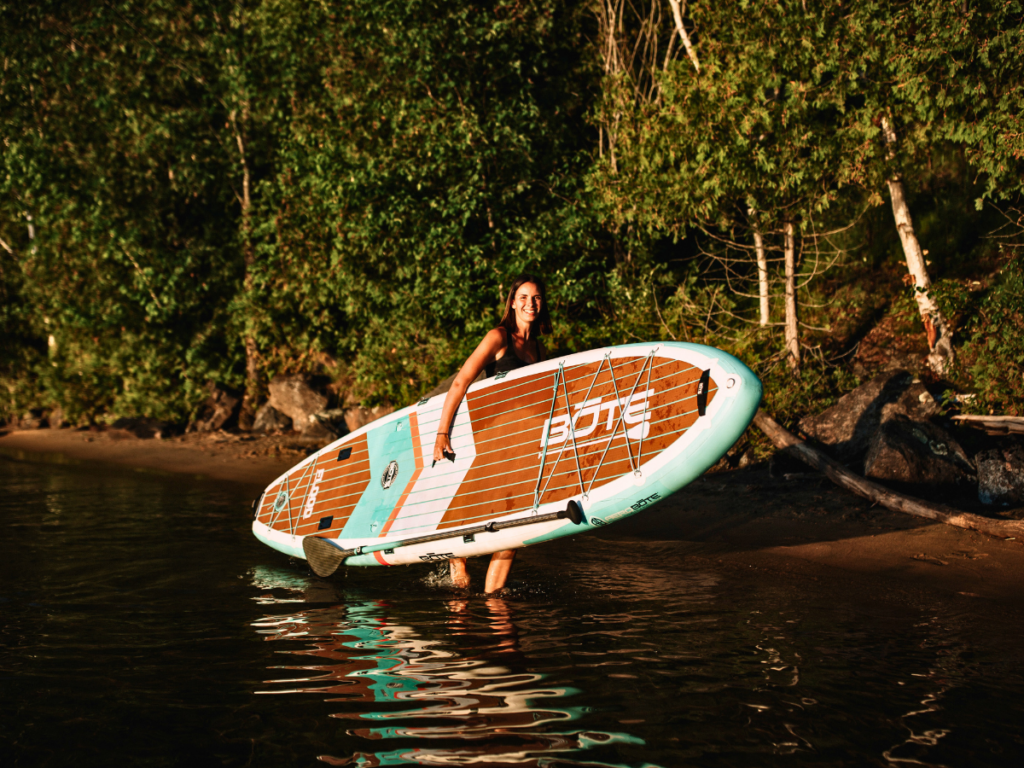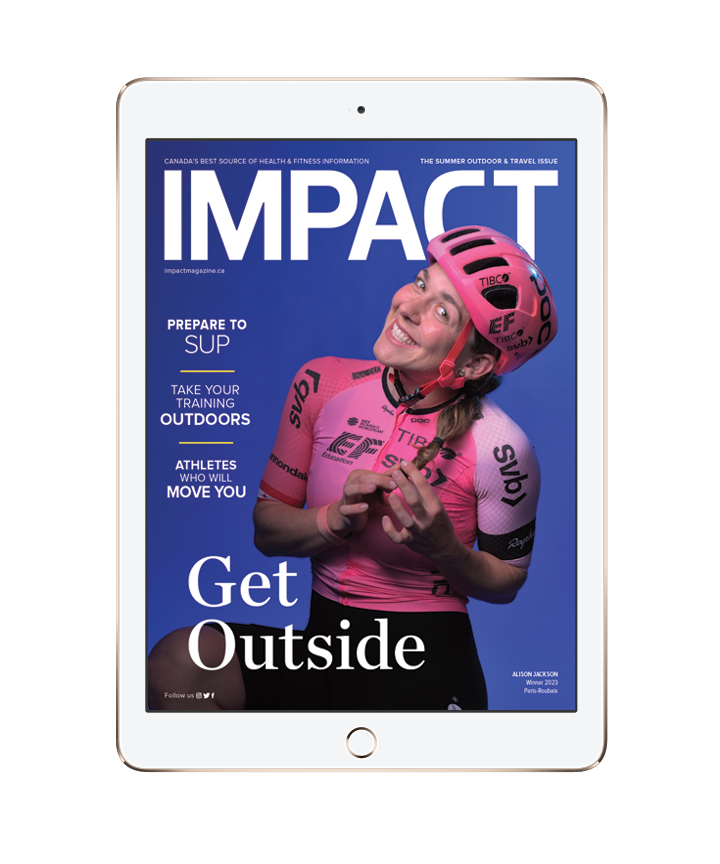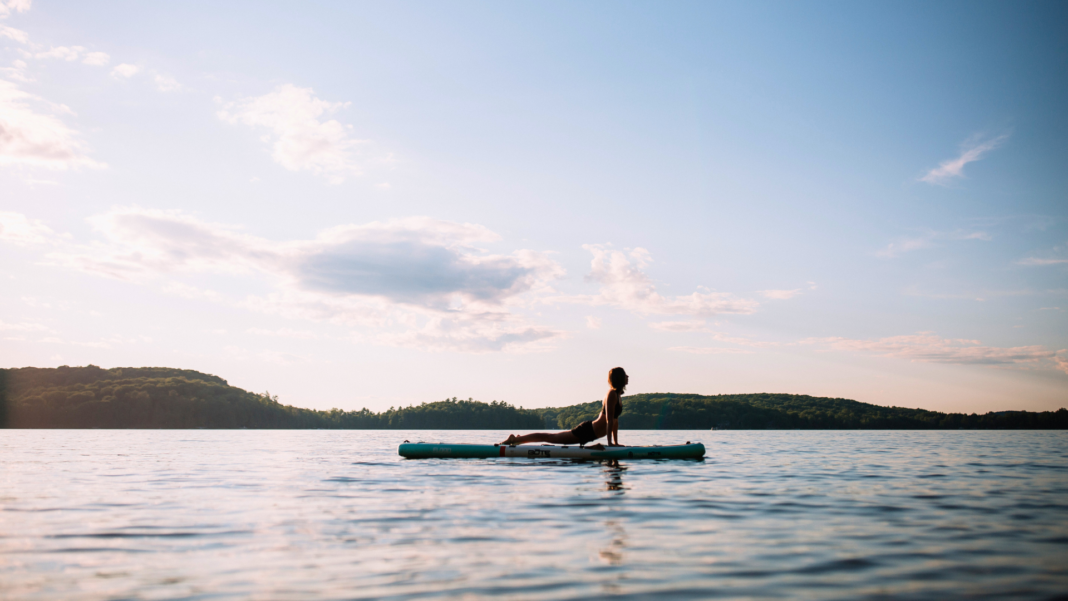Stand-up paddleboard (SUP) yoga is a term that has gained popularity over the last few years. The practice combines the physical and mental benefits of both yoga and paddleboarding, making a fantastic combo.
The physical benefits of taking your yoga practice to the water include improved balance, strength and flexibility. Yoga on a paddleboard adds an extra challenge to traditional yoga, engaging muscles that are not typically used on land. For example, you may notice that your toes are sore from gripping the paddleboard.
In addition to the physical benefits, SUP yoga also offers mental health benefits. Being in nature and surrounded by water has a calming effect and can lower stress levels.
Practicing yoga on a paddleboard encourages mindfulness, as it requires you to focus on your breath and movements. I like to say that SUP yoga “gently forces” us to be mindful. The focus is less on how the pose looks and more on how it feels in your body, but mainly, not falling in.
It can be practiced solo or in a class, with classes usually including a brief paddleboard instruction followed by a short paddle before moving through the practice. Most classes end in Savasana, which is the ultimate feeling of bliss. Notice the sounds of nature and the sun on your skin. Watch the clouds, and embrace the gentle waves rocking the board.

SUP yoga is more than just yoga on a paddleboard—it is an experience. It creates an atmosphere where you can work at your own pace and go outside of your comfort zone. Although it does come with its own challenges, it also gives you the opportunity to have fun, be silly and laugh, which is not as common in a traditional studio. You may feel wobbly, and you may even fall in the water, but falling in and finding your balance is all part of the journey.
As a SUP yoga teacher, I emphasize two things: the importance of having fun and the importance of leaving your ego at the shore. As someone who has been practicing yoga for 15 years, I am not a flexible person. I am all too familiar with the temptation to take on poses that don’t work for my body. I like to bring this experience to my classes so my students have options that work for their bodies. This is why this type of yoga is so humbling.
SUP yoga can create an environment where adults get to play and laugh. The benefits of play-like activities have been well-established: improved creativity, elevated endorphin levels, and reduced stress from daily life.

WHAT TO WEAR?
Bathing suit or workout wear? First off, I recommend dressing for the weather. Avoid heavy cotton and opt for quick-drying clothing. A bathing suit or workout top with shorts is a great option. Yoga pants and a tank top or long sleeve are great for cooler weather.
WHAT PADDLEBOARD IS BEST FOR YOGA?
For SUP yoga, I would advise using an inflatable paddleboard. Inflatable boards sit on top of the water, whereas solid boards tend to sit in the water. This helps to keep you dry (unless you fall in!). They also offer some flexibility on the deck, providing a softer surface. An all-around board, which is usually long and wide, is a great option for your on-the-water yoga practice.
HOW DO YOU PREVENT FLOATING AWAY?
There are numerous ways to keep the boards from floating away. I find the best option for my classes is to use an anchor. I make an anchor from a 10-pound weight tied to a glow-in-the-dark rope with a carabiner that clips onto the paddleboard. This ensures the paddleboards stay in place and maintain their distance from each other.
DO YOU NEED EXPERIENCE?
Whether you’re an advanced yogi on land or have never taken a yoga class before, there are options for everyone. Experience requirements can vary depending on the class and the instructor. Most classes are beginner-friendly and provide instruction on paddling basics. It is always a good idea to communicate with the instructor beforehand to ensure you choose a class suitable for your skill level.
Photography by Danielle Meredith
You may also like: Get on the Water this Summer

Read This Story in Our 2023 Summer Outdoor & Travel Issue
Featuring Alison Jackson, Canadian cyclist and only North American male or female to win the famed Paris Roubaix. Travel the country’s most stunning hot spots by campervan. Become a better trail running by improving your ascents and descents—plus, train outdoors with Canada’s Top Fitness Trainers. Enjoy plant-based summer recipes and so much more.
















